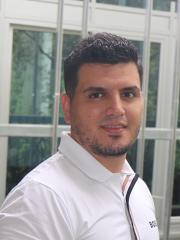Andres Ortega Lucero

Researcher biography
Andres Ortega Lucero is a joint-PhD researcher under the QUEX partnership working at the WH Bryan Mining Geology Research Centre (BRC) of the Sustainable Minerals Institute, The University of Queensland, Australia, and The Camborne School of Mines at The University of Exeter, UK.
Andres is involved in the “Drones 4 Waste: Beyond-Visible Insight for Decision Making” research project, which is part of the Multi-scale, Multisensor Mapping and dynamic Monitoring for sustainable extraction and safe closure in Mining environments (m4mining) Program.
Andres completed his undergraduate degree in Mining and Metallurgical Engineering at the National University of Colombia in 2015. He also holds a specialisation in Analytics from the same university and a master’s degree in Data Science from the Pontifical Javeriana University in Colombia (2023). Before joining the BRC as a PhD student in early 2024, Andres worked as a Mining Sustainability Coordinator, where he led the application of Voluntary Sustainability Standards in various mining projects across Latin America.
Drones 4 waste: Beyond-visible insight for decision making:
The project approach focuses on new technology for high-resolution 3D mapping of mine waste. Mine waste has potential to supply critical metals and industrial materials that society needs for the energy transition to meet NetZero commitments, as well as become important sinks for carbon (e.g. carbon capture). However, waste is also a potential source of environmental contamination or risk to human life when poorly managed. Mine waste covers large surface areas, requires difficult ground-based monitoring and sample collection, and involves multi-dimensional data which could be more comprehensively addressed with the use of drones and satellites. In this project, drone technology will be used to characterise a range of variables that may provide insight into important components of mine waste, such as soil/water chemistry and mineralogy, using hyperspectral infrared imaging (HSI). The challenges will include developing robust proxies to monitor environmental hazards like acid mine drainage and creating workflows to better inform lower resolution but wider coverage satellite data. The project has available mine sites ready for testing the technology, and ample opportunity to validate results against ground-based data.
